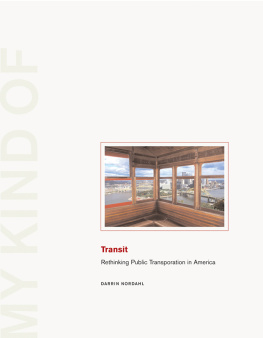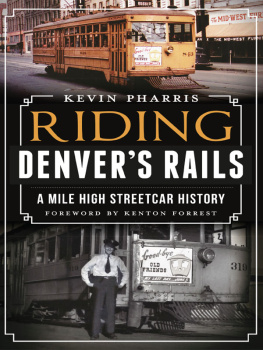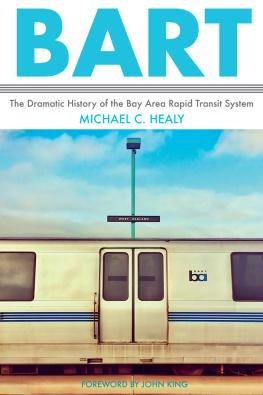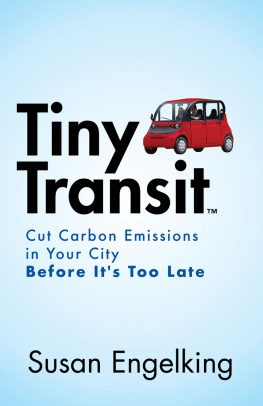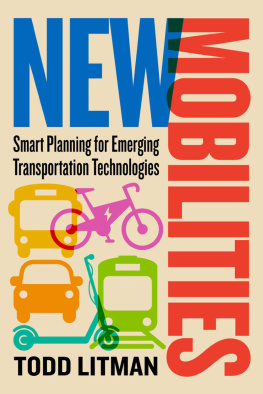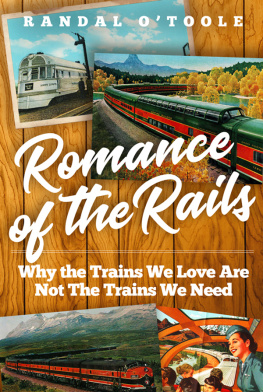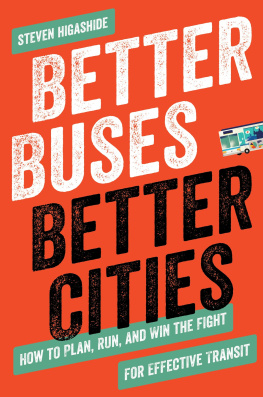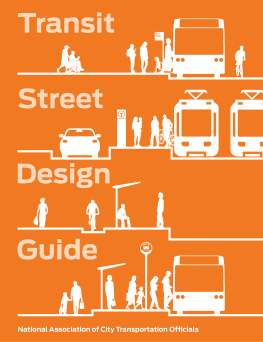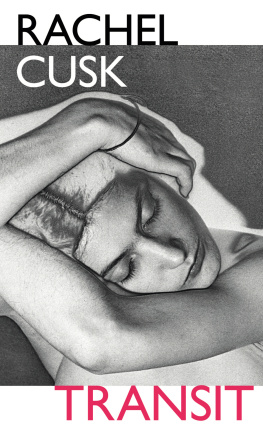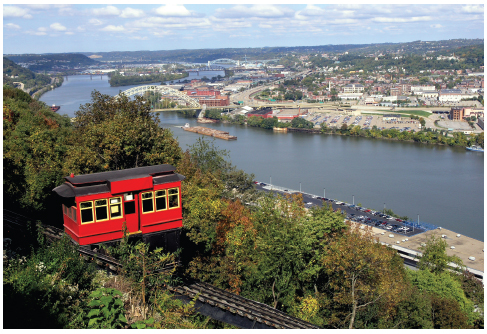Since 1984, the nonprofit Island Press has been stimulating, shaping, and communicating the ideas that are essential for solving environmental problems worldwide. With more than 800 titles in print and some 40 new releases each year, we are the nations leading publisher on environmental issues. We identify innovative thinkers and emerging trends in the environmental field. We work with world-renowned experts and authors to develop cross-disciplinary solutions to environmental challenges.
Island Press designs and implements coordinated book publication campaigns in order to communicate our critical messages in print, in person, and online using the latest technologies, programs, and the media. Our goal: to reach targeted audiencesscientists, policymakers, environmental advocates, the media, and concerned citizenswho can and will take action to protect the plants and animals that enrich our world, the ecosystems we need to survive, the water we drink, and the air we breathe.
Island Press gratefully acknowledges the support of its work by the Agua Fund, Inc., The Margaret A. Cargill Foundation, Betsy and Jesse Fink Foundation, The William and Flora Hewlett Foundation, The Kresge Foundation, The Forrest and Frances Lattner Foundation, The Andrew W. Mellon Foundation, The Curtis and Edith Munson Foundation, The Overbrook Foundation, The David and Lucile Packard Foundation, The Summit Foundation, Trust for Architectural Easements, The Winslow Foundation, and other generous donors.
The opinions expressed in this book are those of the author(s) and do not necessarily reflect the views of our donors.
My Kind of Transit
Rethinking Public Transportation in America
DARRIN NORDAHL
The Center for American Places
at Columbia College Chicago
in association with
The Elizabeth Firestone Graham Foundation
Copyright 2008 Darrin Nordahl and the Center for American Places at Columbia College Chicago
All rights reserved
Published 2008. First edition.
Printed in China on acid-free paper.
The Center for American Places at Columbia College Chicago
600 South Michigan Avenue
Chicago, Illinois 60605-1996, U.S.A.
www.americanplaces.org
Distributed by the University of Chicago Press
www.press.uchicago.edu
16 15 14 13 12 1 1 10 09 08 1 2 3 4 5
Library of Congress Cataloging-in-Publication Data
Nordahl, Darrin
My kind of transit : rethinking public transportation in America / by Darrin Nordahl. -- 1st ed.
p. cm. -- (My kind of transit; v. 30)
Includes bibliographical references.
ISBN 1-930066-88-0 (acid-free paper)
1. Local transit--United StatesCase studies. 2. Urban transportationUnited StatesCase studies. 3. Local transitUnited StatesSocial aspects. I. Title. II. Series.
HE4451.N67 2008
388.40973--dc22
2008035711
ISBN-978-1-610914-48-2 (eBook)
Frontispiece: The funicular in Pittsburgh, Pennsylvania.
All photographs are by the author, except as otherwise noted.
To Noe, Nate, and Mia
CONTENTS

THE ICONIC STAR FERRY, HONG KONGS OLDEST FORM OF PUBLIC TRANSIT, OFFERS BREATHTAKING VIEWS OF THE CITYS SKYLINE AND VICTORIA PEAK. IT IS OFTEN SAID THAT ONE CANNOT TRULY EXPERIENCE THE MAGIC OF HONG KONG WITHOUT A TRIP ACROSS THE HARBOR AT TWILIGHT.
PREFACE
T his book offers a different perspective on public transportation in the United States. The focus here is neither the economical nor environmental benefits of public transit travel (of which there are many) but the experience offered to the passenger and onlooker. I wish to show that, through thoughtful planning and design, the transit vehiclea mobile form of public spacecan provide a setting for public life and thus enrich many aspects of our everyday lives.
In my travels around the world, I have always relied on public transportation to shuttle me to various points of interest within each city. It was in Hong Kong where I realized that public transportation is not just a means to a destination but a destination itself. Consult any guidebook of the city and one will find Hong Kongs public transport systems are points of interest: the engineering marvel of the nineteenth-century funicular that climbs and descends the precipitous face of Victoria Peak; the Star Ferry (also a product of the nineteenth-century), which offers magical views of the citys skyline from Victoria Harbor; the sheer length of Centrals pedestrian escalator (the longest in the world); and the brightly colored double-decker trams that course through the bustling streets of the island. I have come to recognize that my fondest memories of Hong Kong, and many of my most joyful experiences, were fostered aboard these compelling transit systems. Within Hong Kongs diversity of unique transit vehicles, I was able to connect to the larger landscape, discern the historical development of the city, converse with locals, and, hence, learn more about this unique culture and place. I concluded: if such enriched experiences could be had aboard American transit, people might ride it more often.

THE CENTRAL ESCALATOR IS HONG KONGS NEWEST AND MOST UNUSUAL FORM OF PUBLIC TRANSIT. IT TAKES TWENTY MINUTES FOR COMMUTERS TO COMPLETE A TRIP FROM THEIR RESIDENCES IN THE MID-LEVELS DOWN TO THE SKYSCRAPERS BELOW, PASSING RESTAURANTS, BARS, AND SHOPS ALONG THE WAY.
My visit to Hong Kong helped to frame many of the arguments I make in this book, but the thesis of this work really began when I was a graduate student in the Design of Urban Places program at the University of California at Berkeley. It was there that I examined the potential of Las Vegas Boulevard Southmore commonly known as The Stripto become a pedestrian friendly, multi-modal transit corridor. At the time, a new transportation system was being planned that would serve the entire length of the Strip, a distance of 3.9 miles. I felt much of the transit proposal was flawed and predicted it would never be the popular attraction that many anticipated. The chosen transit system was an elevated monorail, and its route was behind the resorts that line the eastern side of the Strip, offering passengers immediate views of parking lots, garages, and maintenance sheds, too far removed from Las Vegas Boulevard to offer the entertainment passengers would desire. It is really from the ground plane of Las Vegas Boulevard that people experience the Strip, not along tracks a quarter-mile to the east and thirty feet in the air. Using case studies of what many consider to be successful and enjoyable transportation systems in the United States, a strong argument was mounted against the monorail and its planned route. Instead, my proposal called for a more pedestrian-scaled, ground-level transit system that allowed passengers a better opportunity to consume the spectacle of this exciting resort communitysmack in the middle of the road, immersed in the glitz and the fantasy of Las Vegas Boulevard.
While conducting research for that thesis, I found numerous municipalities that were just beginning to supplement their existing bus routes with other forms of mass transit. Some cities wanted to resurrect historical forms of public transportation, while others were looking to the future of transit technology. Regardless of the approach, environmental concerns, economics, and efficiency were garnering all the attention. The experience offered to the passengerthe fun factordid not weigh anywhere within the transportation proposals. So I began work on this book, to help transit planners, designers, elected officials, enthusiasts, and supporters understand why certain transit systems in America are valued by the public, while others struggle for ridership.

